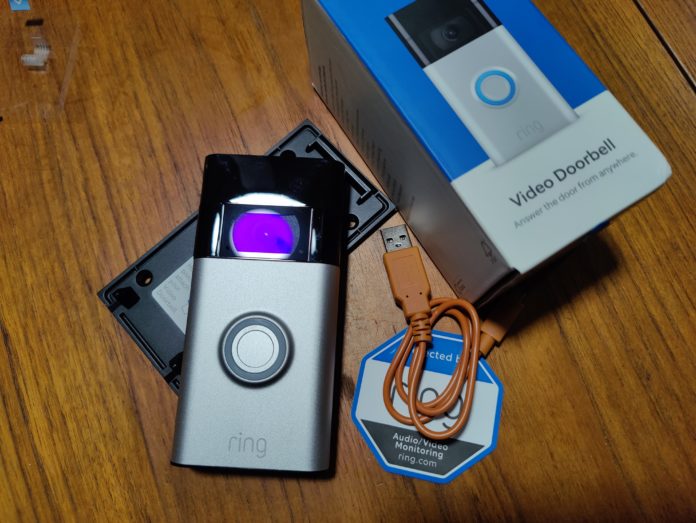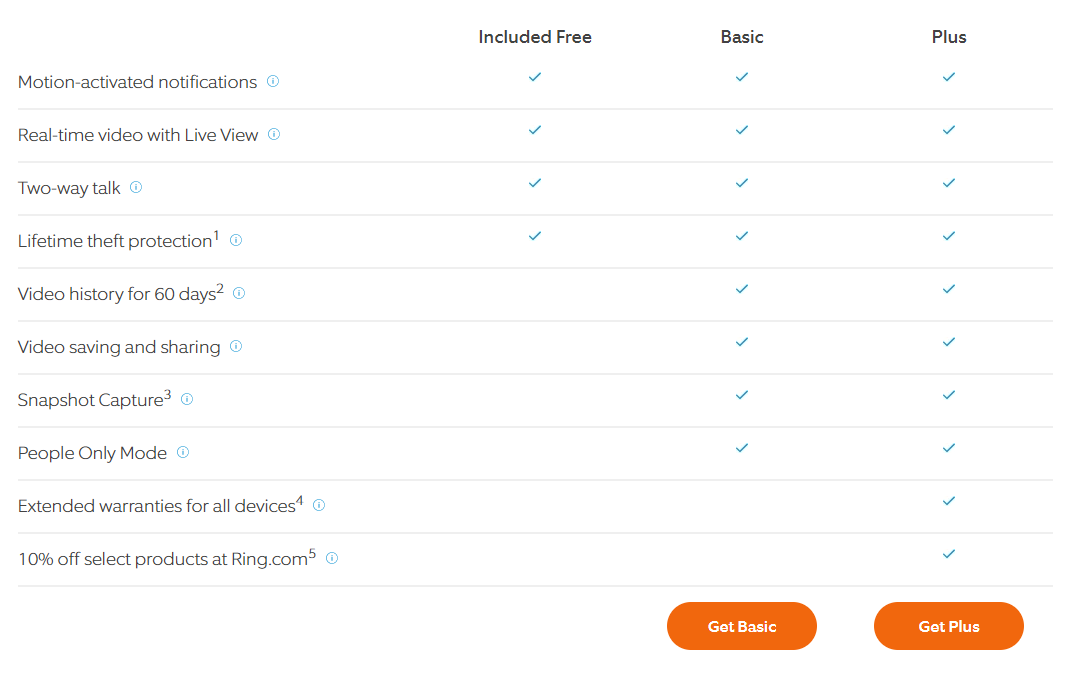There are a few serious contenders in the video doorbell market including Arlo, UniFi, Google and, of course, Ring. All of them have their pros and cons, but whether you’re a fan or not it’s hard to go past the reputation and solid history that Ring has with great hardware.
The Ring Video Doorbell brings all of the known features from previous iterations such as the Video Doorbell 3 including:
- 1080p video quality
- Motion detection with customisable detection zones
- Two way audio including noise cancellation
- Connects via Wi-Fi
- Alexa Integration
Something that continued to put a smile on my face with electronics is when the packaging doesn’t contain pointless plastics. Ring has done the right thing by the environment with the Video Doorbell as the packaging is dominantly cardboard. There is still a few small pieces of adhesive film on the device to protect it until installation.
Setup and installation
Setting up DIY home security devices is so simple these days, even getting some who hasn’t done it before to follow the process takes mere minutes. In this case – creating an account, enabling 2FA and adding the doorbell took a total of 14 minutes. This process really hasn’t changed for some time with the Ring app, it’s excellent and walks a fine line between very simple instructions and talking down to more technically inclined users.
The wide view angles mean that choosing a spot to put the doorbell really is purely about the height of the install. The 155-degree field of view results in an extremely low likelihood of any guests (wanted or otherwise) getting near your door without being seen on camera.
Unfortunately, due to the installation site having old-school solid bricks the physical install — although simple to follow the instructions — took longer to get done and created a few aches from the effort the next day. That’s not anything to do with the device, just a reality of some site installations.
That being said, the physical installation was simple enough to follow, using the wall plate as a template to mark the mounting holes and drill. Then hammer in the wall plugs and screw the plate to the wall. Once your doorbell is connected to Wi-Fi and fully charged, you can use the two security screws to mount it to the wall.
Once installed the Ring Video Doorbell, despite being the lowest in the battery-powered range, provides an experience consistent with what users expect from Ring. The alerts are delivered quickly after activation and the stream launches quickly.
Having been caught out myself, remember: You’ll potentially have to allow the Ring app to run without being shut down by your OS version to save battery.
As the quality of cameras improves, it’s worth making note that most manufacturers now recommend a minimum of 2Mbps upstream to ensure that the stream is smooth, consistent and doesn’t detrimentally impact the user experience.
Video Quality – It’s the cheapest doorbell but the video quality is still excellent
We’re talking about the entry level device in Ring’s doorbell range. So some potential buyers may think that quality has been compromised, but that’s really not the case. All of the features that are actually delivered, including the video feed are right up with the standard Ring sets.
The video feed you’ll get on your device — and recordings — is 1080p and super smooth. Even under infrared, or artificial lighting the colour reproduction is solid and the video detail is crisp. The biggest factors in how good the feed is from a remote location are the signal quality of your Wi-Fi to the doorbell and your upstream bandwidth.
It’s the cheapest of the range, is there any detractors?
The bonus of a battery-powered doorbell like this is the fact you don’t have to run power cables (you can if you wish) but that is a potential problem with this device. Where the higher end devices have a removable battery, the battery is built into this particular device. Grand scheme, it’s not a huge issue however it does remove the option to get a spare battery and hot-swap them when your battery runs low.
Compared to the more expensive models, pre-roll is missing with the Ring Video Doorbell. While for many that aren’t going to be an issue, if you’ve used it and love it – not having it is a significant detractor.
The other issue, which we’ve mentioned in past Ring Doorbell reviews is the lack of a chime. Yes, your phone is the chime and yes, most people have it with them most of the time. But if you’ve got someone house sitting for you, or your phone is flat/on silent you may well miss a visitor. The Chime isn’t heinously expensive at $59, but it adds a significant percentage to the cost of the package for users who are looking for a budget solution.
Subscriptions: The ongoing cost is worth the investment
While it is easy to say you don’t need a subscription, it’s also something that after having you don’t want to be without. Like it or not, the subscription model is “normal” in the security camera/video doorbell market space and if you want the full feature set, you’ll pay for it.
The pricing for Ring Protect is on part with the other major players in the market at $4 per month/$40 per year for a single camera activation or $15 per month/$150 per year for as many cameras as you care to activate.
The important thing to understand with the subscription service is that it provides greater functionality to users. Specifically, you’ll get:
- Video recording history available for up to 60 days</li.
- The ability to save and share recordings
- People only mode – reducing false positive notifications
- Rich notifications – showing images, not just a notification that there is movement
If you go with the Plus ($150 per year) plan, you’ll also get an extended warranty and 10% off all products purchased from Ring’s website.
Should you buy one?
This is the entry point to video doorbells, so if you’re already invested: No. But if you’re wanting to dip your toe in, or simply add to your smart home without spending a fortune you absolutely should.
The Ring Video Doorbell is the entry-level device when it comes to video doorbells. You’re still getting the benefit of the Ring ecosystem with years of R&D as well as a strong reputation for quality hardware.
The built-in battery could be seen as a significant downside for some buyers, without the option to hot-swap batteries. They either need to look at the doorbell wired, or spending a bit more for a higher end device.
Ring Protect is a highly valuable addition for the features you gain, particularly the notifications which are clear and easy to action. Of course, if you’re looking at smart home integration: Alexa is the only pathway here.
The Ring Video Doorbell makes an outstanding starting point for anyone looking to start their smart home security setup. There are plenty of other Ring devices that can be added over time to build your system. It’s available from Ring online and the usual retail channels but online and in-store for $149.00
Disclosure Statement
The device is permanently attached to the house and has not been requested for return.











